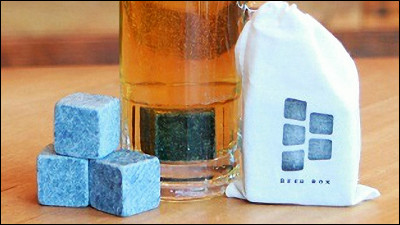Guinness beer brewery created one of the statistical methods "t-test"

byMarc Henklein
A hypothesis test method in statistics "t test"Is used in all scientific fields such as biology and physics but what is" t t testGuinness beerIt was born from the brewery ".
The genius at Guinness and his statistical legacy
https://theconversation.com/the-genius-at-guinness-and-his-statistical-legacy-93134
Guinness is a long-established beer brewing company founded in 1759 and has long relied on the subjective evaluation of brewers for quality evaluation of beer. However, at the end of the nineteenth century, Guinness will expand its scale of operation and strengthen its policy of introducing a scientific approach to every process of Guinness beer production.
Guinness who began recruiting brewers deeply conscious of science hires a person called Thomas Bennett case in 1893. Case is raw material of beerhopincludeSoft resin (soft resin)I thought that the quality of beer made can be evaluated by measuring the amount of soft resin contained in raw hop, assuming that the amount of beer is related to the taste of beer. However, the case faces the problem "It is impossible to estimate the amount of all soft resin that becomes the raw material." The amount of hops used as a raw material for beer was huge, and it was impossible to evaluate it very easily.
Therefore, in the case, samples of 50 grams were taken from hops divided into eleven times, and a method of measuring the average soft resin amount was taken. The case thought that we can know the amount of soft resin in the whole hop by taking the average of multiple samples. To confirm this idea, the case then took 50 grams of sample 14 times and measured again. Then, there is a slight difference in the amount of soft resin contained in the hop taken in the sample, and the case again faces the problem "This method is wrong?"

byJosh Delp
Statistics at the time was a method of taking statistics based on large samples generally, and it was impossible to obtain accurate statistics on small samples such as 11 and 14 times as the case did . It was adopted as a brewery of Guinness beer in 1899William GossettHe majored in chemistry and mathematics at Oxford University and was working on a solution to how to get accurate statistics from small samples. In 1906, a statistician working at the University College LondonCarl PearsonAlong with Gossett, he developed a method of taking statistics from a small sample done at Guinness beer.
However, Guinness was afraid that employees announced research on the brewing of beer with personal name and that other beer brewing companies would be deprived of technology. For that reason, until the late 1930s, we established a rule that "employees should not publish papers by their own name", and in 1908 Goset became an anonymous "STUDENT" as the basis of "t-test" An article "The Probable Error of a MeanWe announced.
Goset's theory is to make statistical differences taken from two small samples "t distributionIt is calledContinuous probability distributionIt was to examine the significance by using. By developing the t test, beer brewers became able to analyze taking sample differences into account, rather than looking for points where the difference between the two samples is zero.

byAllen Skyy
The t-test developed by Goset was not attracted much attention at the beginning of the presentation, but it is a British statisticianRonald FischerBegan to enthusiastically support this theory and attracted the attention of statistical sciences because it was accompanied by a mathematical proof. Since then, the t-Evaluation of brain function of stroke patientsFrom "Measurement of carbon and nitrogen contents of marine bacteria","What kind of behavior causes accident of coal miners"It is utilized in a very wide range of research fields such as.
When drinking Guinness beer next time, it may be good to think about statistical methods developed by the passion that many scholars have made to beer.
Related Posts:







